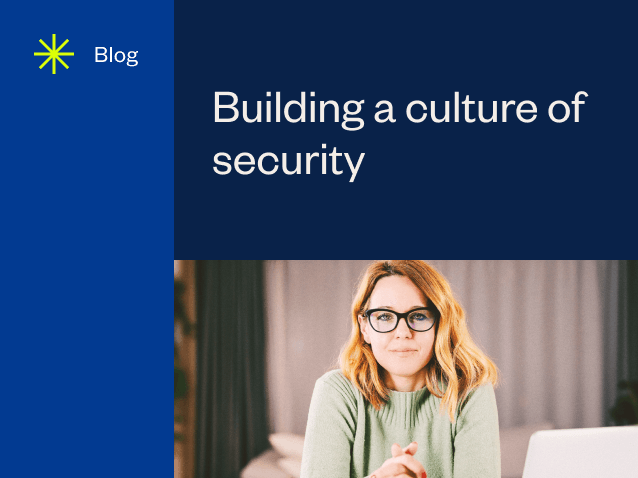The Why Behind Compliance: Building a Culture of Security

Brand reputation is everything in the digital age. Many consumers refuse to do business with brands they don’t trust. One of the sure-fire ways customer trust can be broken? Mishandling or inadequately protecting their data.
It’s no surprise then that corporate compliance teams have become critically important. They identify and mitigate risks for the organization, including risks with direct legal and financial consequences of noncompliance. Additionally, these teams can avoid or minimize the impact of security incidents, safeguarding the brand’s reputation.
Data from A-LIGN’s fourth annual Compliance Benchmark Report shows that establishing customer trust and validating IT controls are increasingly important drivers of compliance programs. Rather than merely checking off the minimum regulatory requirements, companies are building a robust security-focused culture throughout the organization to stay relevant.
In this post, we’ll dig into the data from this year’s report and share how companies can adapt their compliance strategies in response.
What the data says about the “why” behind compliance
A-LIGN’s 2023 survey data showed pressure from above and on the bottom line when it came to the motivations behind compliance. One of the top reasons organizations pursue a cybersecurity audit was a board-level or C-suite mandate (23%), hinting that team members responsible for compliance saw it as a top-down order rather than an ongoing, continuous process within the organization. Another big driver of compliance in 2023 was increasing revenue and winning new clients (23%). This data points to a reactive approach toward compliance, with companies embarking on a new audit when an executive or prospective customer asks for one.
Beyond mandates: A focus on IT controls
In 2024, executive mandates and new business were the least popular responses to the question, “What is the driving force behind your organization’s compliance program?” On the other hand, the importance of establishing trust with customers and partners rose by 36% from the previous year. Additionally, 55% more companies stated that validating IT controls drove their compliance programs in 2024 compared to 2023.

These findings indicate a growing emphasis on trust and security — and an overall maturation in how organizations approach security compliance. Instead of waiting for C-suite mandates to tell them what must be done, compliance teams are taking a more proactive and strategic stance that focuses on what can be done.
Why did this shift occur? As we covered at the beginning of this article, brand reputation is more important than ever. Proactively improving your security posture and publicly sharing your successes can bolster your brand reputation. It’s also possible that businesses have seen — or, worse, experienced themselves — the pitfalls of reactive compliance: lost business, security breaches, and expensive fixes.
How businesses can build a culture of security
As the importance of data security continues to rise, so too will the need for comprehensive and forward-thinking compliance programs. Businesses must prioritize transparency and robust security practices to maintain trust with stakeholders and ensure their internal controls are up to par.
Becoming more proactive toward compliance isn’t easy, but some tweaks to internal processes and attitudes can help get you there. Here are some ways your organization can take steps toward fostering a culture of security.
Regular audits and assessments
- Internal audits and continuous monitoring: Conduct regular internal audits to identify and address vulnerabilities before they come up in external assessments. These periodic internal audits, combined with continuous monitoring of your IT systems, will help you detect and mitigate issues promptly.
- Third-party assessments: Be proactive about engaging third-party auditors instead of waiting until a customer, executive, or investor asks for an audit report. You can also be more strategic about external audits by consolidating all your annual audits into a single compliance event.
A comprehensive compliance strategy
- Leadership commitment and internal collaboration: Leadership should prioritize security and compliance, as they set the tone for the entire organization. The leadership team can then encourage collaboration between IT, legal, compliance, and other departments to create a cohesive approach to security.
- Promote your compliance efforts: When you complete audits and certifications successfully, flaunt them! Celebrate the news internally, and display certifications prominently on your website and in marketing materials to build customer confidence.
Adapting to regulatory changes
- Stay informed: Keep up with changes in regulations, industry standards, and security best practices by subscribing to relevant industry newsletters. Check the websites of governing bodies, like the AICPA Auditing Standards Board (ASB) and the International Organization for Standardization (ISO), regularly for updates. Popular resources for security and compliance news include Infosecurity Magazine, SC Magazine, and Compliance Week.
- Practice agile compliance: Be prepared to adjust your compliance strategies quickly in response to new regulations or emerging threats. If your organization stays sufficiently informed about changes, you can use internal audits and continuous monitoring tools to identify potential gaps and adapt your controls and processes accordingly.
Get more insights in A-LIGN’s Compliance Benchmark Report
What does it really mean to build a culture of security? How many audits are companies doing, and what does that translate to in dollars? The 2024 edition of A-LIGN’s annual Compliance Benchmark Report includes insights like these, gathered from a survey of nearly 700 business leaders and compliance experts. It also offers benchmarks related to compliance audits, enabling companies to assess their existing strategies against industry standards.
See the highlights and download the full report here.
